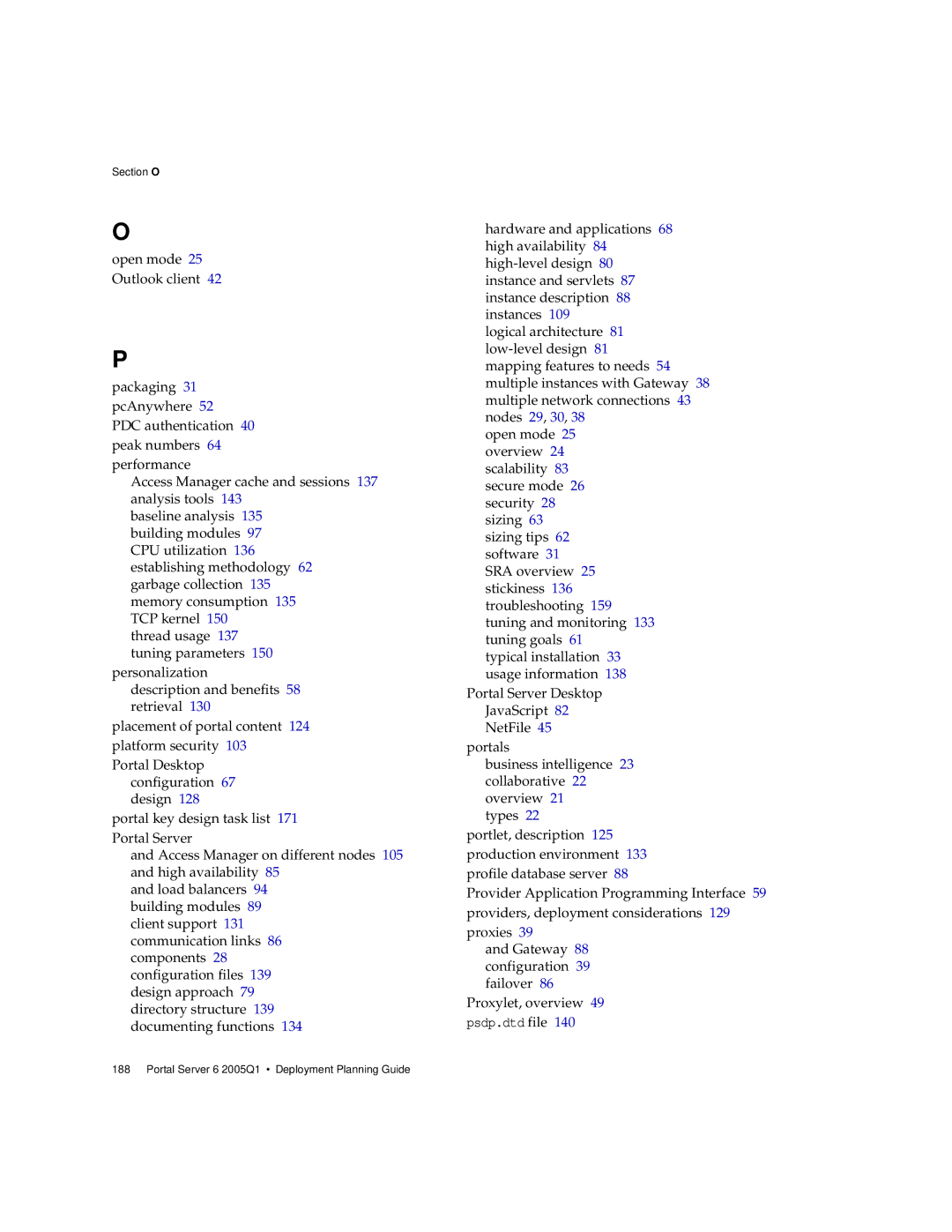Section O
O
open mode 25 Outlook client 42
P
packaging 31 pcAnywhere 52 PDC authentication 40 peak numbers 64 performance
Access Manager cache and sessions 137 analysis tools 143
baseline analysis 135 building modules 97 CPU utilization 136 establishing methodology 62 garbage collection 135 memory consumption 135 TCP kernel 150
thread usage 137 tuning parameters 150
personalization description and benefits 58 retrieval 130
placement of portal content 124 platform security 103
Portal Desktop configuration 67 design 128
portal key design task list 171 Portal Server
and Access Manager on different nodes 105 and high availability 85
and load balancers 94 building modules 89 client support 131 communication links 86 components 28 configuration files 139 design approach 79 directory structure 139 documenting functions 134
hardware and applications 68 high availability 84
logical architecture 81
open mode 25 overview 24 scalability 83 secure mode 26 security 28 sizing 63 sizing tips 62 software 31 SRA overview 25 stickiness 136 troubleshooting 159
tuning and monitoring 133 tuning goals 61
typical installation 33 usage information 138
Portal Server Desktop
JavaScript 82 NetFile 45
portals
business intelligence 23 collaborative 22 overview 21
types 22
portlet, description 125 production environment 133 profile database server 88
Provider Application Programming Interface 59 providers, deployment considerations 129 proxies 39
and Gateway 88 configuration 39 failover 86
Proxylet, overview 49
